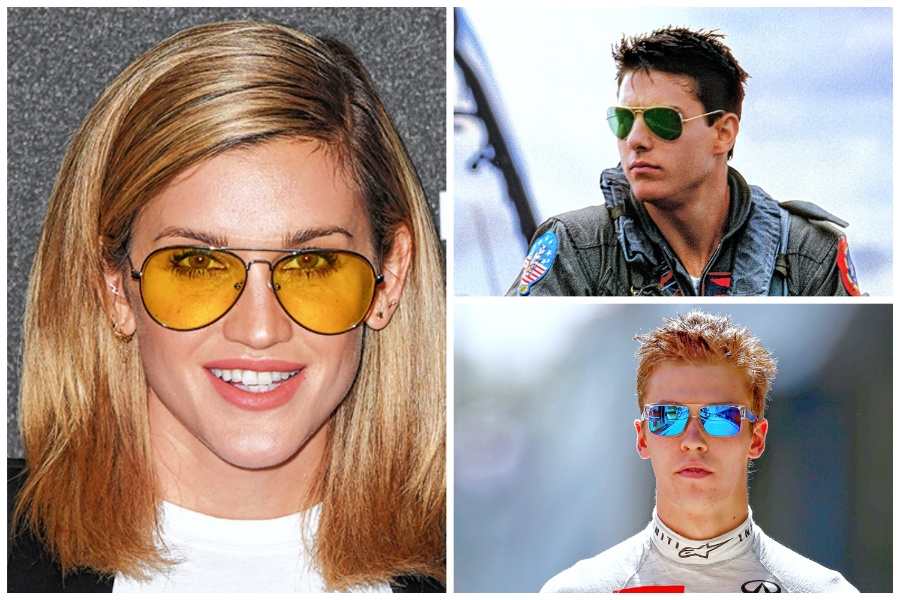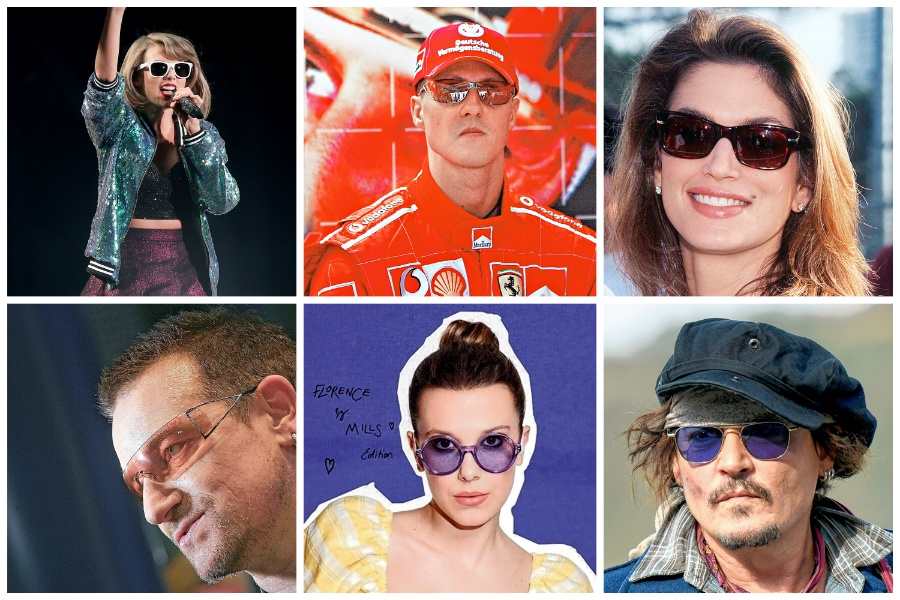When you look at the world through rose-tinted glasses, there is a good reason why it looks nicer. These spectacles improve contrast in flat-light conditions like afternoon sun and, thereby, improve depth perception. It’s a bit like amping up the contrast and colour saturation of photographs in, say, Photoshop, and making things look altogether richer and sharper.
Most of the time when one is buying a pair of shades, what is the most suitable colour of lens for the purpose one is buying it is usually the last thing one is thinking of. There are other things, like whether one is looking cool (or hot) in them, or whether it is stylish enough that usually take precedence when selecting a pair.
Now these things are important — terribly — for something that is going to sit on the face, which is usually the first point of contact in any interaction and is the basis on which a lot of impressions are formed. And that is why people shell


out so much cash for sunglasses. For more bang for the buck, however, one could keep something else in mind — colour.
‘Why colour?’, one would ask. To answer that question we need to revisit a basic: That lenses of one colour would allow mostly light of that colour to pass through and block most of the rest. So, a green lens will let green light through and block others, and a red lens will allow red light through and so on. But we do not live in an absolute or perfect world and thank the Almighty for that! So some light of other colours does pass through and we do not see the world without certain parts of our vision blanked out because their colours have been blocked out by our lenses.
Now, and this is very obvious, the purpose of a pair of shades is to reduce glare and lower the strain on the eyes. It is also often to keep out harmful ultraviolet rays that could damage the eye over the longer term. Another obvious thing is that the darker the lens, the more glare it keeps out. So, before choosing the colour of the lens we need to get these issues out of the way.
First, the brighter the condition that one is likely to use the glasses in, the darker they need to be. So there are lenses available that allow up to 20 per cent, 40 per cent, and so on up to 100 per cent of light to pass through. So, one must decide how dark the shades should be first. For bright daylight use, up to 40 per cent is usually good. Lenses need to be lighter for night or foggy conditions.
The answer to the question ‘what good is a pair of glasses that allow 100 per cent of light to pass through’ is that we are talking only about the visible part of the spectrum here. There is ultraviolet light to deal with as well and, ideally, we need to choose a lens that provides that protection as well. And UV protection does not necessarily have to do with how dark the glasses are. A separate coating is needed to give 100 per cent (nearly) UV ray protection. Let’s deal with the colours now.
Green
Nobody probably has made a pair of green aviator sunglasses look more cool than Tom Cruise in Top Gun and last year’s Top Gun: Maverick. The reason why dark green is the most common colour of these lenses is that for pilots flying at high altitudes, most of the glare comes from blue light. So that needs to be cut out. And dark green does that best. It is also a shade that does not distort vision a great deal. So, if you’re going to be in a place where there isn’t a lot of green, go for green lenses.
Reflective
Now this is a coating that is nearly neutral since it does not really have a colour. It just consists of a reflective layer on the lens that, well, reflects out most of the light and allows only a part of it to pass through. From the front of the lens it can be of any colour, like blue or orange or even multicolour, but from behind it just looks as if the brightness levels have been turned down. Not surprisingly, it is a favourite with sportspersons, particularly skiiers or those who play in the sun, like cricketers.
Grey
This is a neutral shade and just reduces the total amount of light of all colours going through the lens, bringing relief to the eyes and obviating the need to squint and, thus, strain it. Therefore, they can be used in virtually any situation, from driving to sports to general protection and so on. Also, this never goes out of fashion. So it is a safe shade to go with. It seems to be one of Taylor Swift’s on-stage favourites.
Brown
In terms of characteristics it is very similar to grey and also remains a perennial favourite. Like grey it distorts colours minimally and, hence, is good for things like driving and flying. At a pinch, it can also be used for sports. Again, it is a colour that you cannot go wrong with at least 80 per cent of the time. If it’s good enough for Cindy Crawford...
Red
This is good for cutting out glare that’s high on blue light content, like reflection off water or snow and even green light reflected off leaves. Problem is it also distorts vision substantially when cutting out light from the blue end of the spectrum. So, while it is good for those whose activities are in those kinds of situations, others might find it a bit inconvenient to use. Michael Shumacher wasn’t wearing it because it matched the Ferrari colours.
Amber/Yellow/Orange
Typically, this is one of the colours used at night or in foggy and blurry conditions. They cut haze caused by ultraviolet light and clear up vision. Yellows are good for driving at night since they allow most light to go through but cut out just enough to help the driver see where he is going, especially in heavy pollution and foggy conditions. And if you want to look like a rockstar and keep out the glare of stage light, look no further than orange, like U2 frontman Bono.
Blue
Now this is a bit of a question mark when it comes to effectiveness, but it seems to be the choice of a lot of people nonetheless. Now the colour itself might not help cut off a lot of glare because much of it comprises blue light in most cases. But then, if it is dark enough it will generally reduce glare and, hence, prove effective. But there is going to be a lot of colour distortion too. It is useful for things like golf, where there is a lot of green light, or in wooded parts, for the same reason.
Graded
This opens up an entire range of possibilities. They can be single colour or multiple colours, but essentially, while the top of the lens for straightforward vision is coloured, the bottom is clear. This helps those that need to work in bright conditions but also have to read or refer to things that are out of the bright areas. They look pretty cool too, like Zendaya, in the picture.
Lilac and other pastels
Now these are primarily style accessories with not much protection to the eye in terms of glare. If they are UV filter coated, however, they could offer protection to that extent and reduce eye strain. Nonetheless, unless one is going for something that has very little tint, they could still be effective provided the light is not too bright.
